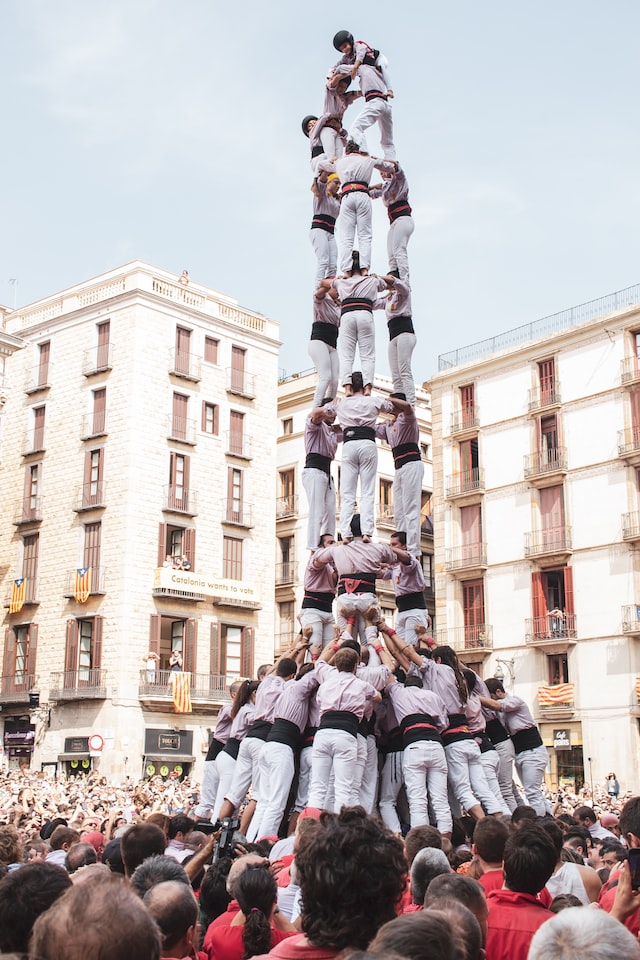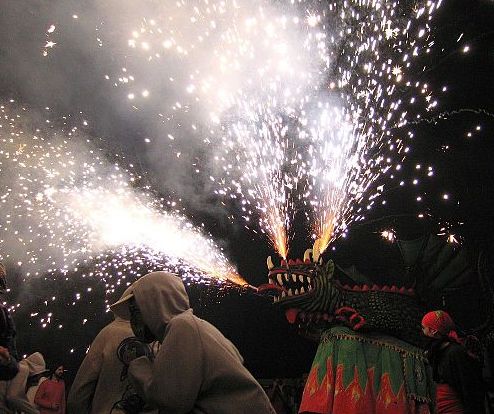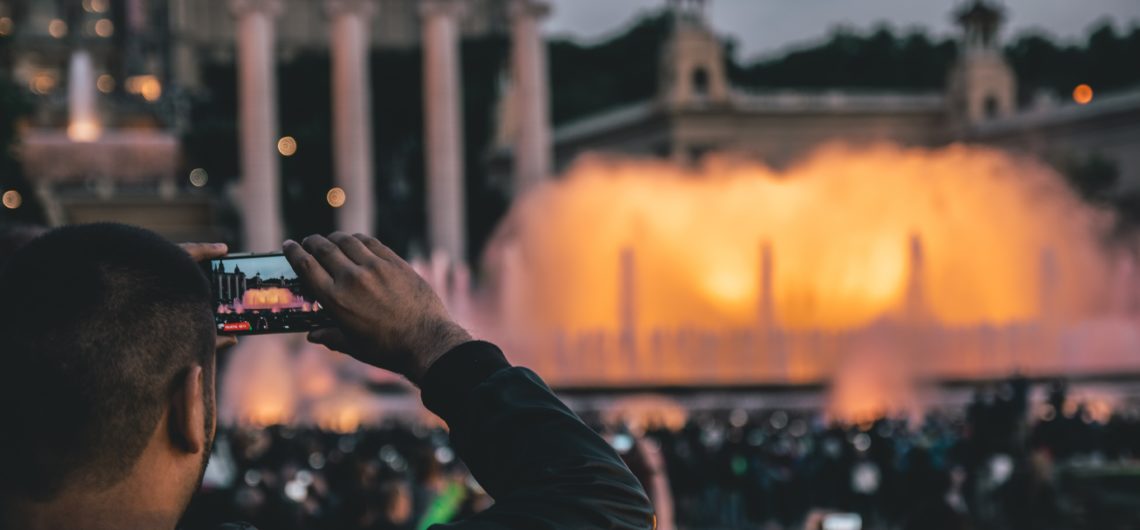September in Barcelona is one of the best months of the year (if we do say so ourselves). Compared to a sweatier, stickier – and sometimes stormier – August, many locals look forward to the cooler evenings, while still enjoying their daily dose of sunshine. The city is still buzzing and BarcelonaTours has some great tips on what to do in Barcelona in September.
Barcelona’s September Street Festivals
Barcelona is famous for its street parties which take place throughout the summer until the end of September. You may have heard of the Fiestas de Gracia which take place mid-August and feature incredible street decorations.
But many of these festivals are just the warm-ups for the Mother of all fiestas: La Mercè.
If you’ve never heard of this week-long celebration of all things Barcelona, then don’t worry. This blog is here to guide you through. By the end of this article, you’ll have everything you need to enjoy the La Mercè celebrations like a local – and enjoy your Barcelona holiday in September.
When does La Mercè take place this year?
La Mercè is celebrated from September 23-26, 2022, with Monday September 26 being a citywide holiday. That’s right, just the city of Barcelona!
What is La Mercè all about?
This annual festival is the main festival of the city of Barcelona – and the biggest street fiesta of the year.
Acknowledged by the government as a local holiday since the 1870s, La Mercè has actually been celebrated since the 1680s!
Like many of the local celebrations, La Mercè has religious roots. It was traditionally a time to revere the “Virgin of Grace”, who supposedly relieved the city of a plague of locusts in 1687. The Virgin was then declared a patron saint of Barcelona, alongside Santa Eulalia, to whom to the Cathedral of Barcelona is dedicated.
200 years after this miraculous saving of the city, La Mercè has evolved into a massive celebration of all things Mediterranean, with a particular focus on the Catalan and Barcelonés culture of today.
During La Mercè, it’s difficult to decide what to do as there is so much choice! Get ready to learn some unfamiliar words for some extraordinary activities.
Castells (Castles)
The castells (Catalan for “castle”) are one of the most incredible cultural traditions in the region of Catalonia, and La Mercè draws teams from all over the area to compete and perform during the festivities.
These human towers are a 200-year-old tradition and, although their exact origin is unknown, it is believed that a strong castell was a representation of a strong community, with the older and stronger members supporting the younger generation.
The key to these towers is the base, where dozens of people stand tightly together in order to support the structure that will be built.
Men, women and children alike take part, and the tower is not considered complete until a young child (six or seven years old) has climbed to the very top! When you consider that these castles can reach more than 10 metres in height, that’s a long way up!
The castells displays happen during the weekend in local squares. Keep an eye out in front of the Cathedral of Barcelona and Plaça de Sant Jaume.

Gegants (Giants)
The gegants, meaning “giants” in Catalan form an important part of the parades that take place throughout La Mercè festival.
The figures are hollow, light structures made of wood and papier-mâché and are carried by one person.
The people represented are usually characters from local legends, or just townspeople dressed in traditional dress.
The gegants travel through the streets to music, often in a procession, to a local square or church where they will stop to be displayed for a period of time.
Every neighbourhood of Barcelona has its own signature gegants, so there’s plenty to see over the course of the festival.

Correfocs (Fire Run)
Once evening comes, the gegants are put away – and with good reason. The sun might go down, but the streets of Barcelona light up with the most exciting parade of the weekend – the enormous correfoc. This translates to “fire run” and is a pretty spot on description of the evening parade through the city streets.
Like the castells, these are teams of people that come together from all over the region. However, these teams consist of pyromaniacs, who like to dress up as devils and wave around pitchforks with fireworks attached to them.
Like the gegants, there are also structures that are carried through the streets. For example, enormous dragons operated by the devils, pushed along and spitting out fire as they go.
This may seem dangerous (and you should probably wear long sleeves and keep long hair tied back!) but these professional fire lovers are well-versed in how to keep their fireworks under control. This parade goes all the way down one of the biggest streets in Barcelona and is a spectacle not to be missed.

The big finale
Of course, such a huge celebration would not be complete without a huge firework display.
Head over to the Museu Nacional d’Art de Catalunya, (the Catalan Art Museum), in the early evening to join the crowds of people that will watch the spectacular display.
Fireworks explode overhead, lighting up beautiful Montjuic. The fountains that sit at the bottom of the hill with also be lit up, and the whole event will be choreographed to an amazing soundtrack that changes every year. What a way to end your experience of this unparalleled celebration of all things Barcelona in September.
Can’t make it to La Mercè this year?
Well, there’s always next year so think about a visit to Barcelona in September to enjoy some of the other fantastic celebrations throughout the month.
Castells regularly happen in different squares around the city during the month of September, and in local town halls and churches, you will find the gegants on display. For example, in the Santa Maria del Pi church, in the Gothic quarter, there are gegants that date back to the 17th Century – you’ll agree when you see the man and woman, named Mustafá and Elisenda, that they look brilliant for their age.
You might also be there for the celebration of La Diada, or the National Day of Catalonia, which takes place on September 11. It’s a great day to experience all things Catalan, including the castells and the gegants. Head to Plaza San Jaume, the parliament square, to see the best castellers showing off their towers.
When it’s time to relax
The beaches, the bars, the terraces… there’s always so much choice. Many hotels across the city have rooftop terraces with gorgeous views and cocktails to die for. There’s also plenty of street level terraces for a beer or wine and some patatas bravas – fried potatoes with a signature spicy sauce – for those looking to enjoy some local culture.
Visit our Barcelona activities pages to choose a Spanish Cooking Class or Flamenco Class to complete your weekend of Mediterranean magic.
Contact our dedicated team for a personalised proposal. You can email us at info@barcelonatours.net or give us a call on +34 935 008 226.

